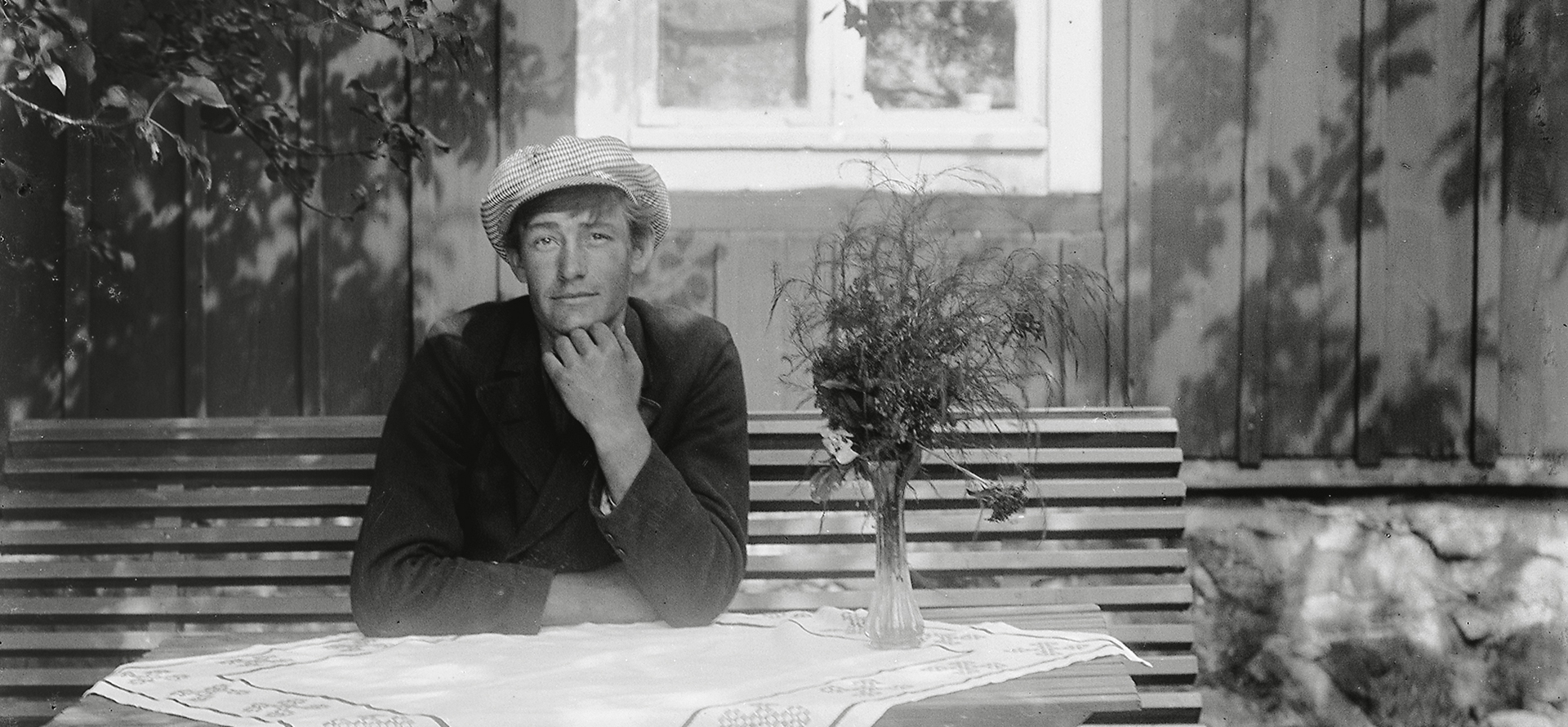
Welcome to rural Sweden at the turn of the twentieth century: a whole village strikes a pose before John Alinder’s camera (1878–1957). Some have come wearing their Sunday best, others in their work clothes. Some have arrived as a group, others alone or with their pets. These portraits are vaguely reminiscent of August Sander’s, but they are gentler. “While some appear to have gradually forgotten about the camera, others posed deliberately for the photographer. But they all, children and adults from the different social strata of the village, are self-aware as they stand in front of his camera. Despite the distance in time, the photographs appear unmediated and accessible,” observes German curator Thomas Weski in the opening of the book John Alinder. Portraits 1910–32. Published this summer by Dewi Lewis, the book features 126 of the 8,421 glass plates in the John Alinder collection.
In the mid-1980s, these photographs were unearthed in the cellars of a library by Iréne Flygare, curator of the Upplandsmuseet, the museum of Uppland, John Alinder’s home region north of Stockholm. “The importance of a good photograph grows with each passing year since it was taken. Not necessarily because the importance itself increases, but because we are made aware of it when the surroundings change and the comparisons accumulate. We discover how things get lost as time inexorably moves forward,” notes the writer Jenny Maria Nilsson in the book’s conclusion. This doubtlessly explains the gentle nostalgia emanating from these images.



But as the book progresses, the otherness of these figures from another century becomes less striking than their familiarity: the radiant smile of this boy perched in a tree with a man (his father?); the typically awkward figure of adolescence; the affection and pride we feel for our loyal furry companions. There is always something profoundly moving about recognizing yourself in a person you are completely separated from by the passage of time. “The portraits combine solemnity with naturalness, exalted humanity without affectation, and the photographer has given the individuals air, never skimping on the space around them. This gives a sense of freedom,” continues Jenny Maria Nilsson.
An autodidact, John Alinder also made it into some of his images. It’s easy to recognize him. In one of the pictures, he poses with all his gear. In another, he is barefoot in the grass, pants rolled up his calves. He seems both tender and mischievous, with a dose of non-conformism. His biography confirms this last impression. Son of a farmer, he refused to take over the family farm (at a time when plowing the land was synonymous with good living) to devote himself to photography. This did not prevent him from carrying on other activities, like… running a speakeasy. While he comes off as a bit of a rebel, he also chose to spend his entire life in his native village. Therein lies perhaps the secret of his images: his subjects are his neighbors, his friends, the members of his community. But he manages to take a small step sideways, to show people the way they really are, in their everyday world.
By Laure Etienne
Laure Etienne is a Paris-based journalist and former member of the editorial team at Polka and ARTE.
John Alinder: Portraits 1910–32, with texts by Thomas Weski and Jenny Maria Nilsson. Dewi Lewis Publishing, 256 pp., £36.





